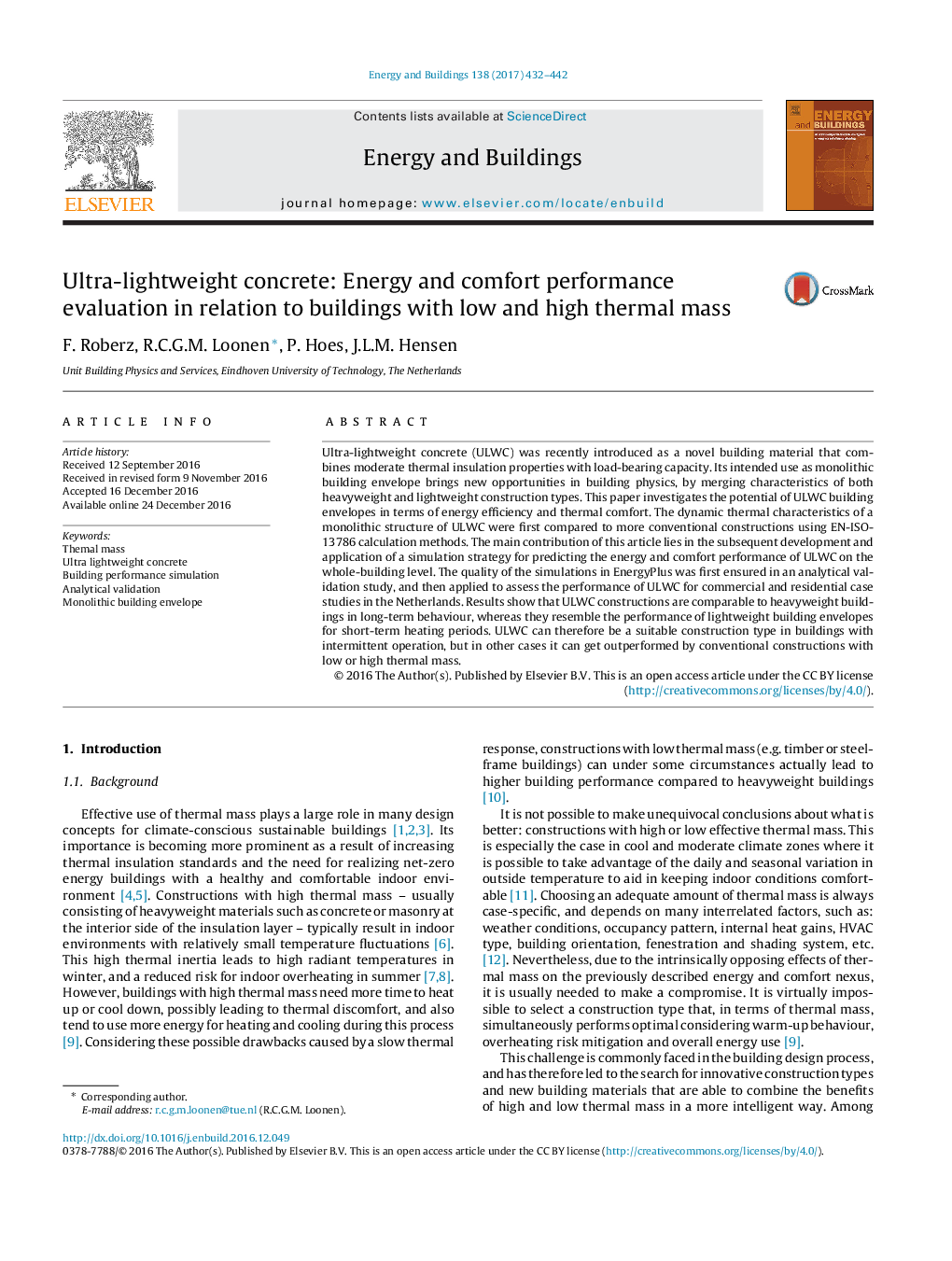| کد مقاله | کد نشریه | سال انتشار | مقاله انگلیسی | نسخه تمام متن |
|---|---|---|---|---|
| 4919452 | 1428952 | 2017 | 11 صفحه PDF | دانلود رایگان |
- Ultra-lightweight concrete (ULWC) combines insulating and structural properties.
- This paper assesses the energy and comfort performance of ULWC constructions.
- ISO 13786 characterization methods are not well suited for such innovative materials.
- A dynamic simulation strategy in EnergyPlus was developed and validated.
- ULWC is a suitable construction type in cases with intermittent building operation.
Ultra-lightweight concrete (ULWC) was recently introduced as a novel building material that combines moderate thermal insulation properties with load-bearing capacity. Its intended use as monolithic building envelope brings new opportunities in building physics, by merging characteristics of both heavyweight and lightweight construction types. This paper investigates the potential of ULWC building envelopes in terms of energy efficiency and thermal comfort. The dynamic thermal characteristics of a monolithic structure of ULWC were first compared to more conventional constructions using EN-ISO-13786 calculation methods. The main contribution of this article lies in the subsequent development and application of a simulation strategy for predicting the energy and comfort performance of ULWC on the whole-building level. The quality of the simulations in EnergyPlus was first ensured in an analytical validation study, and then applied to assess the performance of ULWC for commercial and residential case studies in the Netherlands. Results show that ULWC constructions are comparable to heavyweight buildings in long-term behaviour, whereas they resemble the performance of lightweight building envelopes for short-term heating periods. ULWC can therefore be a suitable construction type in buildings with intermittent operation, but in other cases it can get outperformed by conventional constructions with low or high thermal mass.
Journal: Energy and Buildings - Volume 138, 1 March 2017, Pages 432-442
